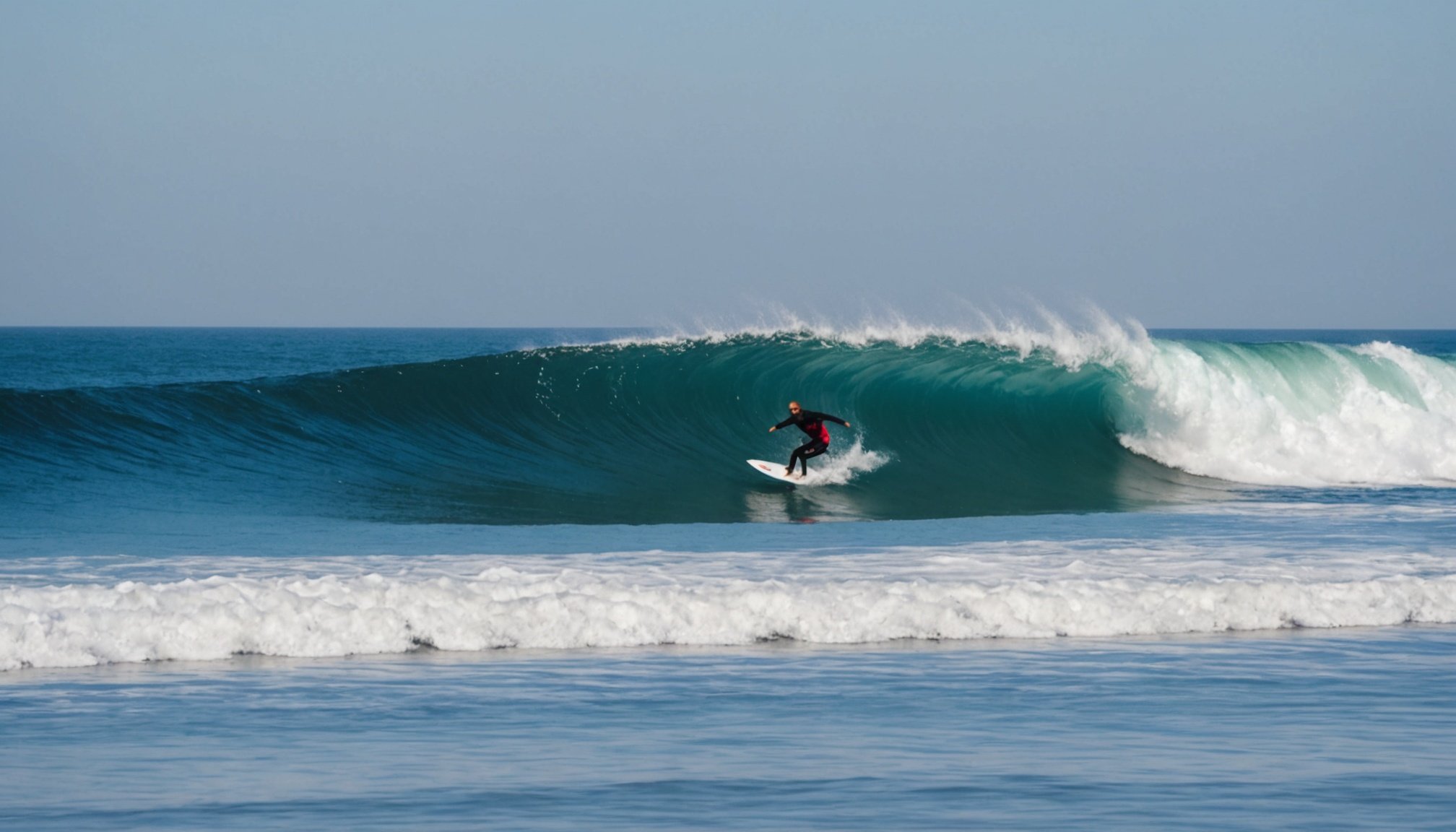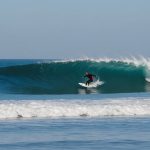Understanding Ocean Conditions
The complexity of ocean conditions greatly influences surfing, determining the experience and performance of surfers. Different wave types present diverse challenges and opportunities. Wind influences play a crucial role in shaping wave conditions. Offshore winds are generally preferred as they create cleaner waves. In contrast, onshore winds can make the sea choppy. Experienced surfers consider wind speed and direction to anticipate wave shape. Tide dynamics also profoundly affect surfing conditions. During high tide, waves may break closer to the shore, while at low tide, break points are further out. Surfers often favour mid-tide for optimal surfability. Understanding these elements allows surfers to plan their sessions for conditions that match their skill level and desired experience.
Types of Waves
Waves come in various forms, including spilling, plunging, and surging. Spilling waves are gentle and ideal for beginners, while plunging waves are powerful and suited for advanced surfers. Surging waves occur on steep beaches and can be dangerous. Recognising these types helps surfers choose appropriate conditions, enhancing their ability to execute manoeuvres effectively. Knowledgeable surfers evaluate wave types and characteristics to optimise their surfing experience, ensuring safety and maximum enjoyment on the water.
Additional reading : Creating Oceanic Unity: Dive Deeper with Underwater Drills for Superior Synchronized Swimming Teamwork
Advanced Surfing Techniques
In advanced surfing, mastering advanced surfing techniques is crucial for safety and enjoyment. By honing maneuvering skills, surfers can enhance their control over the surfboard, allowing for more dynamic rides. Efficient paddling is critical; Precision Paddling involves using appropriate arm techniques and maintaining body alignment to cut through water while minimising resistance.
Precision Paddling
For effective paddling, advanced surfers must adapt to varying ocean conditions. Timing is key—catching a wave early or late can impact skill execution. Ensuring the correct body posture, such as maintaining a straight spine and legs along the board, maximises thrust and stabilisation.
Also to see : Unlocking Precision: Boosting Professional Darts Accuracy with Advanced Mental Training Strategies
Wave Selection Strategies
Selecting the optimal wave is an art. Observing wind influences and tide dynamics is essential. Identifying factors such as wave size and power helps evaluate a wave’s suitability and safety.
Executing Maneuvers
Executing manoeuvres, like cutbacks and aerials, showcases advanced surfing techniques. Utilising the wave’s energy propels the surfboard with agility and grace. Adapting to wave types like plunging or spilling waves is necessary for implementing complex tricks, enhancing overall surfing performance.
Training and Conditioning for Surfing
Embarking on a surfing journey requires more than just basic technique. To truly excel, surfers must invest in their surfing training, focusing on physical conditioning and building surf fitness. This proactive approach ensures readiness for diverse ocean conditions and enhances overall performance.
Endurance Training
Endurance is crucial for maintaining energy across long sessions. Cardiovascular fitness directly impacts surfing stamina, enabling surfers to paddle back to waves repeatedly. Recommended exercises include swimming, running, and cycling, which simulate the continuous exertion seen in surfing. Incorporating paddling drills enhances efficiency and power in the water, bridging the gap between land-based training and ocean performance.
Strength Training
Targeting key muscle groups, such as the core, shoulders, and legs, is vital for improved surfing performance. Strength training routines should emphasize these areas to boost balance, board control, and explosive movement for manoeuvres. Flexibility and balance, often achieved through yoga or Pilates, complement strength by providing agility and precision on challenging waves.
Mental Preparation and Strategy
Building mental resilience is as important as physical prowess. Mental visualization techniques allow surfers to anticipate shifts in surf conditions, aiding focus and execution. Developing a strategic mindset not only aids in competitions but also fosters adaptability in unpredictable waters. This holistic conditioning equips surfers for both the highs and challenges of surfing.
Safety Protocols and Risk Management
Engaging in surfing requires a clear understanding of surfing safety and effective risk management strategies to prevent injuries. Essential safety gear, like wetsuits, leashes, and helmets, is critical in various conditions. Wetsuits provide thermal protection while surfboard leashes keep you connected to your board, preventing loss in turbulent waves. Helmets, though less common, are vital in rocky areas for head protection.
Understanding how to recognize hazardous wave conditions is paramount. Dangerous scenarios can include powerful shore breaks or rip currents, both posing significant risk to surfers. Learning to read the ocean and avoid these danger zones is crucial for safety.
Injury prevention starts with awareness. To minimize risks:
- Always assess the surf spot before entering the water.
- Have a buddy system in place while surfing.
- Know your limits and communicate them with fellow surfers.
These measures can significantly reduce injury risk. Being prepared and informed empowers surfers to enjoy their time in the water safely, enhancing both performance and enjoyment. Prioritizing these safety protocols ensures that unpredictable ocean encounters are met with confidence and caution.
Personal Anecdotes and Case Studies
Surf stories from experienced surfers offer invaluable insights into mastering ocean conditions and advanced surfing techniques. Through personal experiences, experts often share pivotal moments when they had to adapt swiftly to unexpected wave types or unpredictable wind influences. These stories emphasize the importance of understanding tide dynamics, learning to ride shifting tides to maximize surfability efficiently.
Some seasoned surfers recall how, in their early days, they underestimated the impact of tides and found themselves struggling in unfavourable conditions. Over time, they honed their maneuvering skills, adjusting body balance to respond adeptly to varying conditions, thus enhancing their surfboard control.
Learning from others’ experiences enables surfers to anticipate challenges and adopt successful strategies. For instance, observing an expert effortlessly execute maneuvers on a complex wave highlights the value of precise timing and body positioning. Real-life anecdotes reveal the journey of developing mental resilience, turning surfing training into a comprehensive process involving both mental and physical conditioning.
These shared experiences inspire new generations of surfers to embrace learning opportunities, ensuring safe and fulfilling encounters with the ocean’s ever-changing character. Understanding risk management remains a fundamental aspect of this learning journey, connecting stories past and present with general surf safety practices.






